|
|
Post by palmfxmart on Sept 18, 2018 1:26:11 GMT -5
Germany’s Higher Growth Forecast by 2 Percent in 2018 ![]() The German economy is expected to rise around 2 percent this year, more or less 0.1 percent, according to the German Economy Minister Peter Altmaier on Monday. It is possible to reach as much as 3 percent but companies’ efforts are not sufficient to attain higher growth as there is a lack of skilled workers to raise their output. Around the beginning of the month, the Ifo economic institute adjusted higher their rate forecast of German GDP to 1.9 percent from 1.8 percent this year which is indicative of good performance in the first six months of the year.
|
|
|
|
Post by palmfxmart on Oct 1, 2018 21:57:51 GMT -5
Japan’s Manufacturing Grew Steadily in September, Exports Close to 2-years Low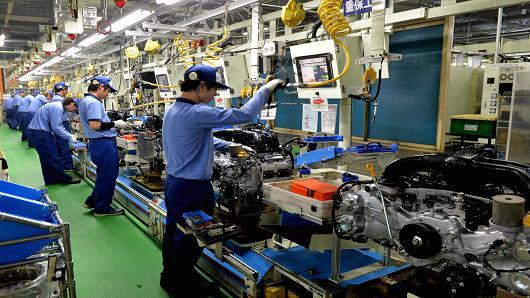 The manufacturing activity of Japan grew steadily in September based on the revised survey on Monday despite the export orders, as well as production, dropped to an almost two-year low in the background of global trade protectionism. The final Markit/Nikkei survey showed a decline to a seasonally adjusted figure of 52.5 from a flash reading of 52.9 but remained the same from last month. The 50th figure separates the expansion from contraction for 25 succeeding months but failed to meet the future output of 22-month low amid global trade war. However, an economist at IHS Markit, Joe Hayes, said that the average PMI reading was “weaker” than the first two quarters this year indicating lesser drive. Although, corporate confidence continues to be positive with output levels expected to higher in 12 months, however, the degree of confidence slid to a 22-month low. Some panel members have raised concern over this. The sub-index forecast was adjusted higher to 56.8 from the preliminary of 55.9, which is the lowest sentiment since November 2016. As for the exports orders index, it was revised lower to 49.8 from a flash reading of 50.9 for two succeeding monthly declines. Yet, analysts are concerned with the worsening trade war between the US and China that could affect economic growth in both large nations.
|
|
|
|
Post by palmfxmart on Oct 3, 2018 23:34:19 GMT -5
German Services Grew to an 8-month High Inverse to Weak Manufacturing Sector ![]() German services growth reached an 8-month high in September based on the survey on Wednesday which seems to be softening the effects of slower manufacturing growth because of its stronger domestic demand. The IHS Markit’s final composite Purchasing Managers’ Index (PMI), reflecting the performance of manufacturing and services sectors that represent two-thirds of the economy, dropped to 55.0 from 55.6 in August. The outcome is still a bit lower than the preliminary estimate in the previous month but it still above the 50 demarcation, separating growth from contraction. The business activity for the services sector improved to 55.9 in September from 55.0 a month earlier with the employment rate reaching its highest in almost 11 years while services firms continue to be optimistic about future businesses. In the span of two years, the service sector at a quicker pace compared to the manufacturing sectors which supports a significant shift in the driver of growth in the biggest area of euro, according to IHS Markit economist, Phil Smith. Growth rate almost expanded by 0.5 percent in the third quarter, he added. German services were driven by a positive record of employment and increasing real wages, higher job security, and cheaper borrowing costs, boosting domestic demand.
|
|
|
|
Post by palmfxmart on Oct 4, 2018 23:48:39 GMT -5
US Services Sector ISM survey Depicted Growth but Weaker Pace in IHS Markit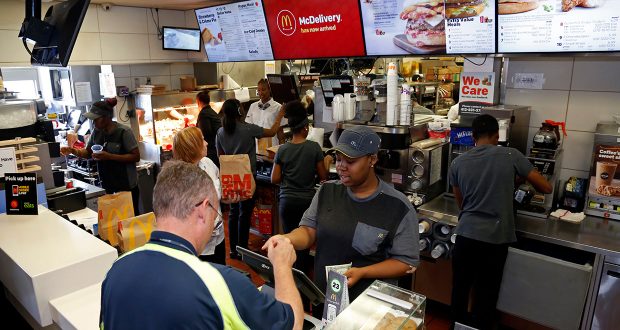 The US services sector grew to a 21-year high in September, supporting employment of most companies and signals strengthening of the economy by the end of the third quarter. The optimistic reports on Wednesday keep the course of the interest rates to rise in December. Last week, the US central bank increase their rates for the third time in 2018. Fed Chairman Jerome Powell described on Tuesday that the economy has been “remarkably” well. Growth will likely be above the trend if the strength on the survey continues, according to the US Economist at Capital Economics in London, Andrew Hunter. This will likely keep the Fed interest rates to move steadily in short-term. The ISM non-manufacturing activity index rose by 3.1 points to 61.6 in the previous month since August 1997. A reading higher than 50 line, implies expansion representing over two-thirds of the US activity. Meanwhile, the ISM new orders sub-index for the services sector climbed by 1.2 points from 61.6 last month. The factory employment based on the survey grew to 2.4 in September from 56.7 in August. This implies the September's nonfarm payrolls could work on the upside which is scheduled to be released on Friday. However, in comparison to the IHS Markit numbers, it shows growth to have a weaker acceleration for this month. Although the ISM survey exhibited positive growth on business conditions last month, there are still concerns on capacity, logistics, adding to the uncertainty brought by the global trade. Companies encounter issues in the background of a robust economy and tightening labor market conditions. There are increased reports of a hard time in searching for qualified workers to meet the demand, leading to delays in delivering goods and services There have been reports on the difficulty in the search of qualified workers to meet the demand, resulting in delays in delivery good and services. On a global issue, American just imposed tariffs to China, which in turn, raised costs on some raw materials.
|
|
|
|
Post by palmfxmart on Oct 8, 2018 1:47:07 GMT -5
China’s Service Sector Picks Up Demand In September, Employment Declines
 ![]() China’s service sector rose at the quickest pace in July quarter due to pick-up in demand according to the Reuter survey on Monday despite weaker sentiment because of lesser jobs over two years expansions amid higher cost pressure affecting profit margins. The Caixin/Markit services purchasing managers’ index (PMI) grew to 53.1 in September from 51.5 the month earlier but still above the 50 mark, separating contraction from growth. Faster progress implies its forward direction amid escalating trade row in the US. Moreover, the official measurement of the non-manufacturing sector in the previous months published on the last day of September also shows continuous growth that was boosted by construction with government’s fiscal easing gaining demand. The positive survey was driven by higher new business orders while the sub-index increased at the fastest rate in three months resulting to 52.4 from 51.7 in August. China is relying more on services, especially high value-added services in finance and technology to lessen its dependence on heavy industry and investment, as to what they have been doing in the past years. At the same time, policymakers tried to kick up the pace of project approvals resulting to better infrastructure investment growth. The progress of services sector would lessen the impact of US tariffs on China’s manufacturing sector. Yet, factory activity slowed in September after 15 months of expansion in the background of declining export orders in over two years based on a separate Caixin survey last week. The services sector, constituting more than half of the economy in the first 6 months of the year, rose by 7.6 percent than a year earlier, exceeding the overall GDP growth of 6.8 percent. The published rate of Caixin’s composite manufacturing and services PMI on Monday slightly grew to 52.1 in September from 52.0 the month earlier. Nonetheless, despite positive growth in the services sector eased worries on Chinese policymakers, a sudden drop in employment in the sector seems to come out as an emerging stress.
|
|
|
|
Post by palmfxmart on Oct 9, 2018 2:17:56 GMT -5
Eurozone Investor Morale Dropped in October Due to Italy Fiscal Concerns Investor’s confidence in the eurozone dropped more than the forecast in October based on the survey on Monday, amid worries on Italy’s fiscal policies and stricter car compliance, especially emission rules giving a big impact. The Sentix index for the eurozone dropped to 11.4 from 12 points in September while the Reuters forecast suggests a drop to 11.7. Meanwhile, the sub-index measuring expectation grew slightly to -8.3 from -8.8 as it drops down to 33 from 35, reaching its lowest since April 2017. The automobile sector in Germany, as well as the future fiscal policy of the Italian government, had a big impact on the slight decline of the index, according to the managing director of Sentix, Manfred Huebner. Italy was also part of the concern by investors as the European Commission intends to bring the planned deficit lower, with the EU rules in mind. Another index measuring investor morales in Germany showed an increase in spite of increasing pressure in the large automotive sector to remunerate for older diesel cars. Stability concern on Chancellor Angela Merkel’s government with the coalition to their allies and center-left social democrats also has had an influence on this besides contentious argument over immigration and spy-related scandal. Nevertheless, the German economic data remains steadfast despite the worrisome discussion on the car industry and repute of the governing coalition stability, Huebner added. The economy may have been “cooling down” but a recession is still not on the table.
|
|
|
|
Post by palmfxmart on Oct 11, 2018 0:07:58 GMT -5
China’s Exports Slowed down in September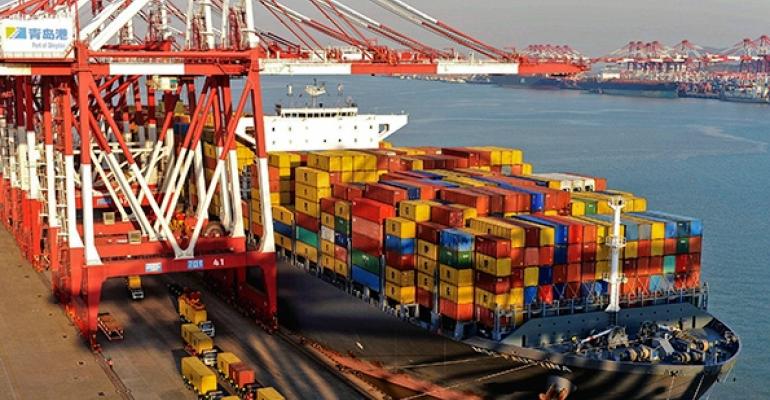 China’s export rose at a slower rate in September dropped down at a slower rate in September, influenced by a quick decline in orders as the trade war escalates with the United States affecting the Chinese shipments, based on the survey by Reuters. Imports exceeded recent highs, which is not a good indicator for Chinese policymakers who are relying on economic growth with weaker external demand. If the economy further slowed down, economists see that this could drive more stimulus measure that would boost small and medium-sized firms as the main source of employment. Export growth of China slowed to 8.9 percent in September from 9.8 percent gain in August., based on the median estimate of 32 economists in the Reuters poll. Imports are also anticipated to slow down to 15 percent from 19.9 percent gain in August. Forecast on exports tells a further slowdown in September amid rising trade protectionism. Although, the economist at Nomura noted that one less working day has added pressure to go down. On the other hand, if the China-US trade tension continues for medium-to-long-term, this would have an impact and “hit beyond the scales” in trading reports. China’s overall trade surplus is presumed to drop to $19.4 billion in September from $27.89 billion in the previous month. The recent forecast of the International Monetary Fund reduced its global economic forecast for 2018 and the next as repercussion on Sino-US trade war. Moreover, China’s economic growth forecast declined to 6.2 for this year and 6.4 for the following year. On Sunday, China announced their fourth cut this year to boost the economy, amounting to how much they have put aside as reserves to further strengthen the policy easing to hit back from the trade war with the US.
|
|
|
|
Post by palmfxmart on Oct 12, 2018 1:12:01 GMT -5
Germany’s Outlook for 2018 and 2019 Boosted by Domestic Demand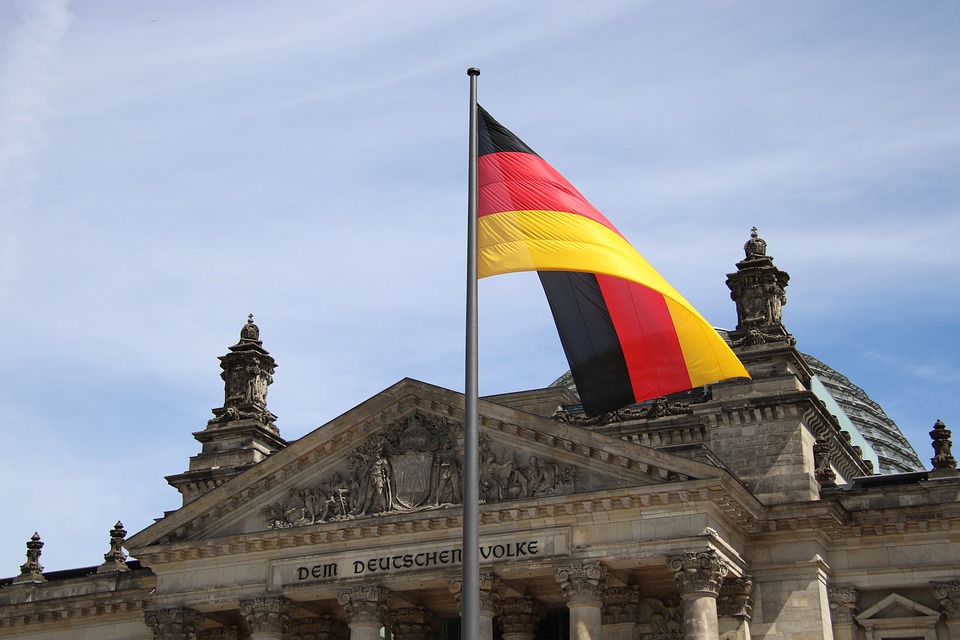 A strong domestic demand will push the increase of German growth by 1.8 percent for 2018 and the year after, according to the economy ministry on Thursday. Other than that, the net trade will not have an impact on the biggest economy in Europe. The economic growth outlook of Germany is dimmed by the protectionist tendencies and international trade war. Other than that, Berlin also aims to impose quickly the EU-US tariffs which were agreed on earlier this year and sims to settle the transatlantic trade conflict. The revised forecast from the government based on the report by Reuters on Wednesday, suggests the rising global trade dispute as the major contributing risk factor in the future.
|
|
|
|
Post by palmfxmart on Oct 18, 2018 23:53:19 GMT -5
Japan Exports Slumped in September, Dim Economic Outlook Amid Trade War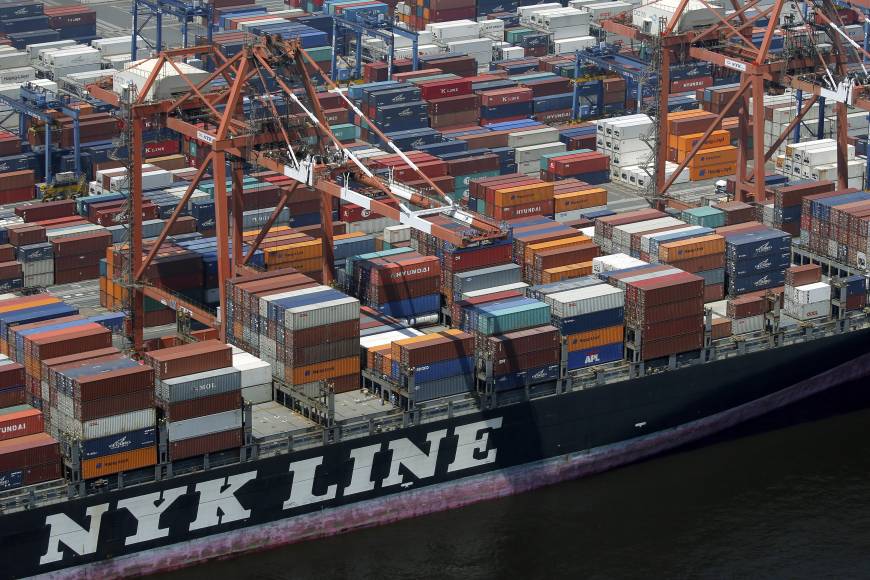 ![]() Exports of Japan dropped in September for the first time since 2016 due to lesser shipments to large nations of China and the US, dimming the incoming third-quarter economic outlook with larger impact of worsening US-China trade war. Reuters data implies a third of Japanese companies, including other businesses and not just exporters, relayed having problems due to the trade war and concerns on the fall of businesses. At the same time, Japanese policymakers are worrisome with the overall economic impact of the trade war. External concerns of natural disasters add conflict to this issue, affecting production and physical distribution. Although the trade war has not physically affected the trading activity, a sluggish external demand has worsened the outlook of a sluggish outcome in the July quarter of the year. A chief economist at Norinchukin Research Institute, Takeshi Minami, noted that the slight augmentation of the economic output was boosted by firm consumption and strong capex without any impact from external demand. Yet for Japan, lesser shipments to America and China raises concern as the account for 20 percent of Japanese exports. Data on Japanese exports released on Thursday showed a drop in exports by 1.2 percent in September than last year. Economists’ forecast based on Reuters survey shows that 1.9 percent in anticipated after a 6.6 percent gain in August. This has been the first decline since November of 2016. By the number, the volume of exports declined to 4.8 percent in September of the year, which was the first drop since seven months ago. Japan’s exports to the United States dropped by 0.2 percent in nine months due to a decline in shipments for construction and mining machinery, as well as, auto parts and medicines. On the other, imports from the United States grew to 3.1 percent in September because of crude oil and liquefied petroleum gas. This narrowed the trade surplus of the nation with the US by 4.0 percent year-on-year to 590 billion yen ($5.24 billion). Meanwhile, the US is willing to discuss open trade talks with Japan, describing them to be relevant but performing less on the market for U.S. exports, according to the U.S. Trade Representative’s office conveying to the Congress on Tuesday.
|
|
|
|
Post by palmfxmart on Oct 21, 2018 23:20:12 GMT -5
China’s GDP YoY Growth Weakened in Q3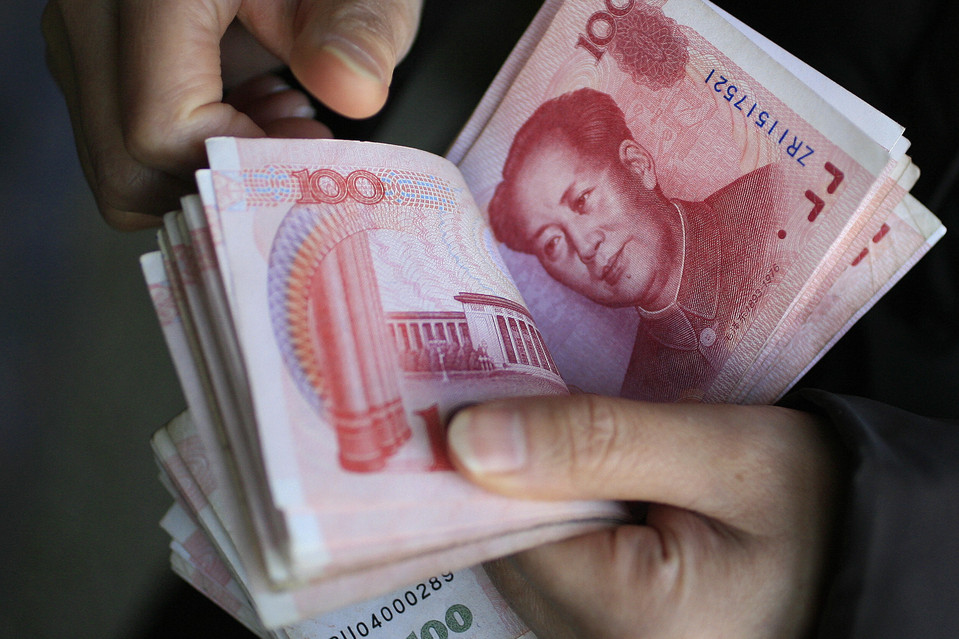 ![]() The economic growth of China rose at a slower rate of 6.5 percent in the third than a year ago, which is the weakest growth since the global financial crisis based on the data published on Friday. It shows a moderate cooling of the country amid the efforts of the government for some years in facing the debt risks that starts to affect growth and ongoing trade war with the US that put exports at risk. Survey of analysts by Reuters anticipate growth of the GDP by 6.6 percent in July, indicating a slight weakening compared to the 6.7 percent growth in the previous quarter. The result of the GDP reading shows the weakest quarterly growth of year-on-year since the first quarter of 2009 in the background of the global financial crisis. The latest economic data also expressed the decline in domestic demand amid softer factory activity of infrastructures and consumer spending after years of a clampdown on riskier lending added to debt causing the borrowing rates to go higher. According to the National Bureau of Statistics, the GDP growth rose to 1.6 percent on a quarterly basis in comparison to the 1.8 percent rise in the April quarter. Meanwhile, analysts anticipated growth of 1.6 percent on a quarterly basis.
|
|
|
|
Post by palmfxmart on Oct 22, 2018 23:30:06 GMT -5
Germany’s Outlook Turns Positive After a Weak Third Quarter Data The German economy drops in the third quarter as they struggle due to declining in the car manufacturing sector amid continuous growth factors. Yet, the economy is presumed to recover in the last three months of the year, according to the Bundesbank on Monday. The implementation of new motor vehicle emissions certification has somehow affected the German auto companies in getting regulatory clearance while large dealership discounts decrease in order to clear out stocks prior to the implementation of the new rules. The largest economy in Europe accounted for the five-year growth of the euro bloc and this recent decline may have caused worries on ending the growth cycle before the countries can recover from debt crises years ago. Bundesbank’s regular monthly economic report says that the German economy drive is still “fundamentally intact”. The business climate grew which is apparent in the third quarter on the reports of Ifo institute. Hence, an economic expansion can be expected in the present quarter. Yet, the retail sales and construction are likely to slow down as the reports on the third quarter scheduled to be published in the middle of November anticipated to slow down from recent highs. Such figures will have an impact on growth after a large drop in industrial production. Although sectors other than automobile manufacturing are doing well and lag on industrial orders get bigger, Bundesbank also mentioned. Growth forecast of Germany slid by 1.8 percent from 2.3 percent for this year and weakened the outlook for 2019 to 1.8 percent from 2.1 percent in the background of the trade war, employment shortages and struggles in the auto sector.
|
|
|
|
Post by palmfxmart on Oct 24, 2018 22:13:14 GMT -5
Japan’s Manufacturing PMI Grew Due to Rise in New Export Orders in October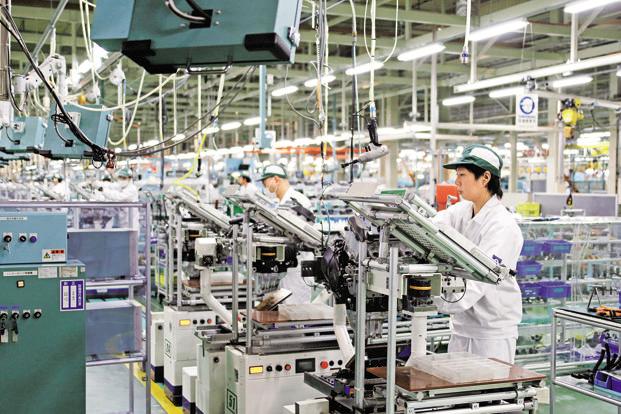 Japan’s manufacturing activity grew in October at the quickest rate in about half a year as new exports orders recovered, according to the preliminary survey on Wednesday. It shows how careful most companies from a trade war. The Flash Markit/Nikkei Manufacturing Purchasing Managers’ Index (PMI) increased to 53.1 seasonally adjusted in October from the final output of 52.5 in September. It still over the 50 mark, separating contraction from expansion for more than two years and reached the highest number since April. Export sales grew for the first time since May despite various problems because of a global trade war, according to Joe Hayes, an economist at IHS Markit. Next month output is significant to confirm if the recovery is just for a short period of time and weakening due to recent natural disasters. The preliminary new export orders index increased to 51.7 from a final 49.8 in September. The confidence of Japanese manufacturers increased in October from September but will continue to be flat in the next three months based on the Reuters Tankan survey last week. There are still risks involved with how trade deal between the United States and China will affect the global economy as they retaliate tariffs with each other in the past months and the planned bilateral trade talk is on hold.
|
|
|
|
Post by palmfxmart on Oct 28, 2018 23:19:05 GMT -5
Eurozone Inflation Outlook Remains the Same Despite Economic Growth Risks ![]() The outlook of eurozone rates is presumed to continue increasing by 1.7 percent annually until 2020 despite risks of weak inflation and economic growth, according to a survey from the ECB on Friday. The ECB announced their stimulus program of easing up to 2.6 trillion euro ($2.96 trillion) at the end of the year and increase rates after summer next year as they try to keep the inflation in spite of growth uncertainty. The recent survey of Professional Forecasters supports the outlook on Friday, keeping their rates unchanged for headline inflation in the next two hikes to be at 1.7 percent and 1.9 percent in long-term. However, the forecast for ECB is to reduce their estimates for core inflation and cut down more volatile energy and food prices and economic growth in 2018 and the next. The target inflation rate of the eurozone’s central bank aims to be close to two percent but less than this number in medium-term. The survey shows that the ECB growth of core prices will still increase by 10 basis and slow more than 1.2 percent this year and 1.5 percent the next.
|
|
|
|
Post by palmfxmart on Nov 5, 2018 23:20:56 GMT -5
RBNZ Forecast Keeps Policy Rates Unchanged In Short-term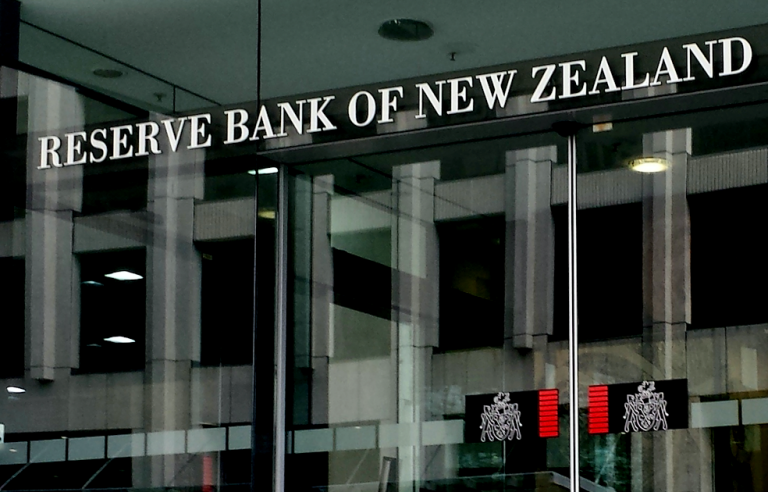 The central bank of New Zealand is presumed to keep the interest rates unchanged this week for the next term as policymakers wait for an increase in inflation and higher growth numbers and determine its sustainability. Meanwhile, economists will see scrutinize the monetary policy on Thursday if the trend changes from being dovish since August, as it decided to sustain the interest rates at a record low until 2020 since the current progress did not meet expectations. The official cash rate (OCR) of the Reserve Bank of New Zealand will be maintained since November 2016 to be at 1.75 percent based on the Survey from Reuters of 16 economists on the final policy review for the year. However, two economists anticipate a rate hike in the July quarter of 2019 and four of them assumed an increase in the last quarter while the rest of the months expected not to change in 2019. The latest announcement from the RBNZ Governor Adrian Orr for the month of September was not too negative at the August meeting but said that an accommodating monetary policy is necessary to raise inflation. RBNZ is taking solace from the unexpected solid growth for the second quarter and continued on the next three months, close to the midpoint target of 2.0 percent according to analysts while some consider this to be misleading.
|
|
|
|
Post by palmfxmart on Nov 6, 2018 22:19:04 GMT -5
German Industrial Orders Boosted by Local demand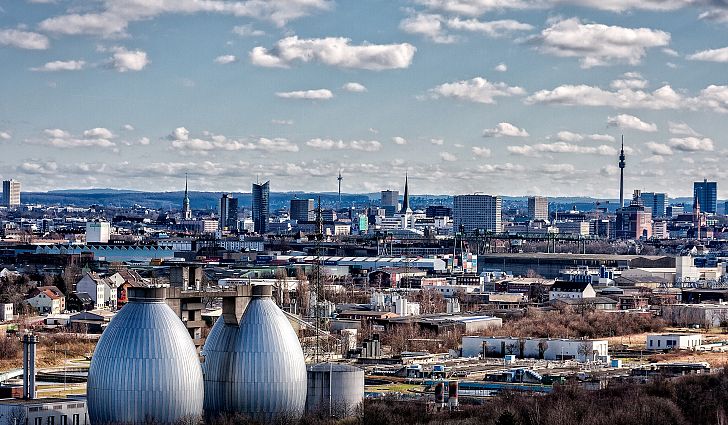 ![]() The German industrial order grew surprisingly in September boosted by higher demand from domestic and other eurozone clients based on the reports on Tuesday. This also shows that Germany closed the quarter in solid growth. Contracts that are made locally rose by 0.3 percent after an increase and revised higher by 2.5 percent last month, according to the Fed Statistics Office. The figure came out stronger than anticipated as analysts forecast of a drop by 0.6 percent.
|
|